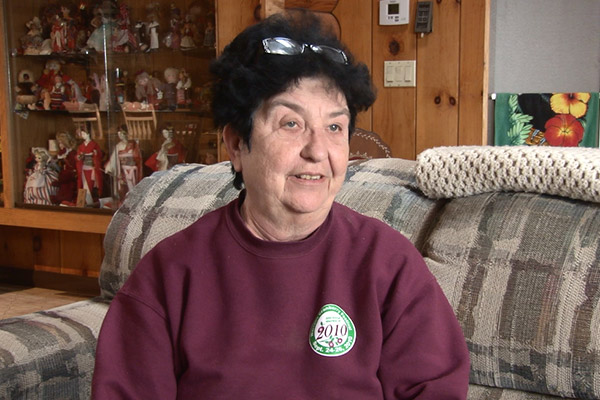From farm to table and Wisconsin to China
 |
|
Nodgi Van-Wychen, a third-generation cranberry grower, is glad that Chinese consumers enjoy her produce. [Photo/China Daily] |
Another town in Central Wisconsin also is looking to host their Chinese guests, and if they arrive in September, they will be able to attend the 45th annual Cranberry Festival in Warrens, where a population of 360 swells to more than 100,000 for the event.
The state is the leading producer of cranberries, with more than half of US production. Massachusetts is the second-largest US producer.
The state exports 35 percent of its cranberries, compared to 5 or 10 percent a decade ago, and much of the growth has come from China.
Chinese used to consume less than 1 percent of the world's cranberries, and now it's 9 percent, according to Jim Reed, chief executive officer of the Cranberry Growers Cooperative.
He said co-op members are exporting 25 to 30 percent of their dried cranberries to China and expects that to increase to 40 percent.
The co-op has 40 growers from the area, most have been family-owned and operated for generations. The co-op invested $23 million in a new production facility last year, plus another $9 million in a giant freezer that houses 33 million pounds of cranberries from last fall.
The farmers used to partner with the Ocean Spray cranberry company, but now with the new facility they are packaging and marketing their own brand, CranGrow.
The co-op is funding an independent study in China on cranberry as a remedy for H. pylori, a type of bacteria that causes stomach infection and is a common problem in China. Results will be announced in the fall.
"Knowing that people all around the world, people in China, are enjoying (our cranberries) makes our family very, very proud," said Nodgi Van-Wychen, a third-generation cranberry grower. "Hopefully, they will enjoy it and become healthier because of our product."
Van-Wychen's grandfather was the first general manager on the marsh in 1903. Her father joined him after returning from World War II.
When her father was ready to retire, Van-Wychen quit teaching and they returned to the marsh. Now, her four children and in-laws join them in the marsh.
For every acre of cranberry marsh, seven to 10 acres of support land are needed, which includes a lot of water.
Van-Wychen said that she is excited that the middle class in China is enjoying cranberries.
"That means that my grandchildren, which will be the fifth generation, will continue to do the same thing we are doing now on this march," she said.
Reed took their newly-branded dried cranberries to SIAL China 2017, Asia's largest food innovation exhibition in Shanghai in May.
Also attending the event was a team from Sartori Cheese, a local artisan cheesemaker that's been around since 1939.
At SIAL China, they celebrated Sartori's second anniversary of entering the Chinese market. They took the Black Pepper BellaVitano, which won the grand champion award at the 2017 US Champion Cheese Contest.
Blair Wilson, vice-president of marketing of Sartori Cheese, believes the product will be the next chocolate.
"China has so much potential. We want to be there first," said Wilson.
For Pam Hodgson, a master cheesemaker at Sartori, "there is a sense of place" in every piece of cheese.
"I hope we can share that little piece of Wisconsin with them," she said.






















